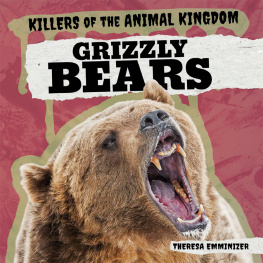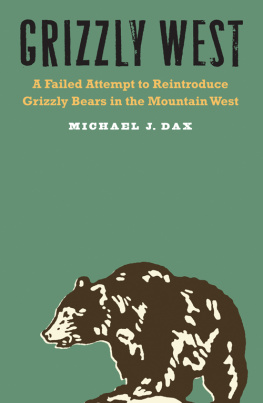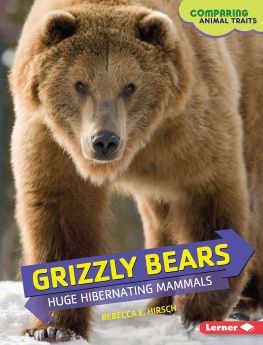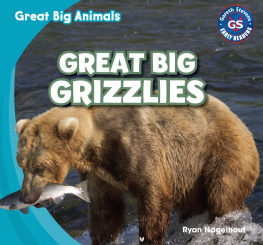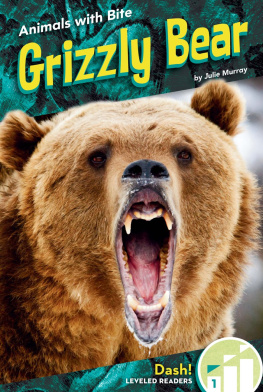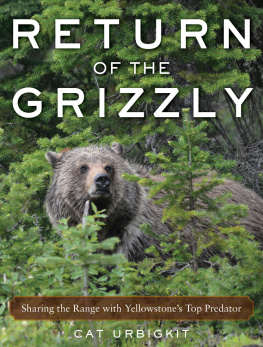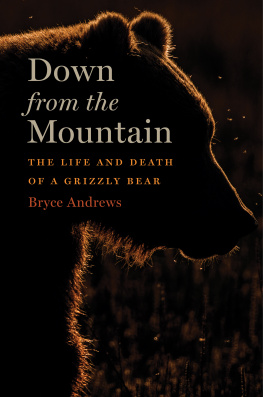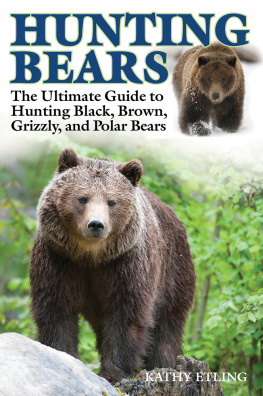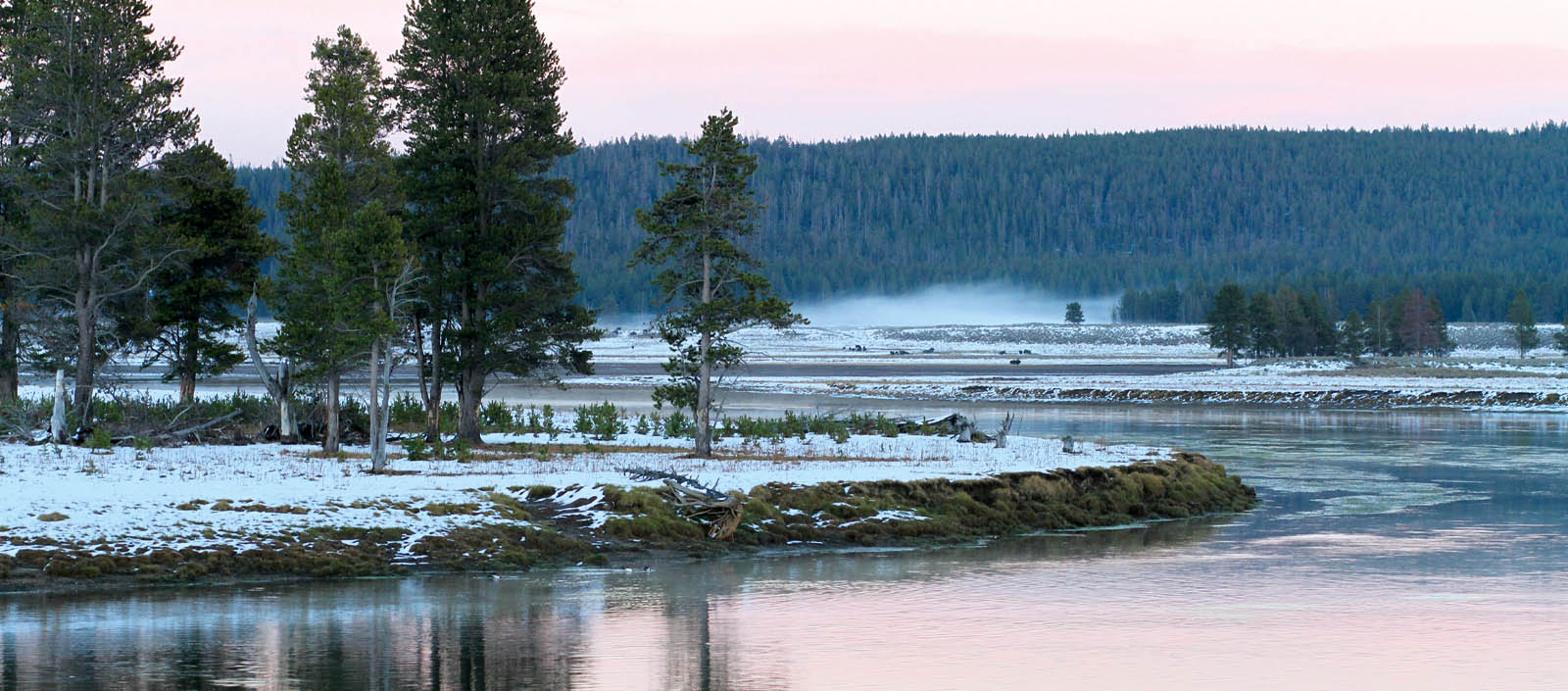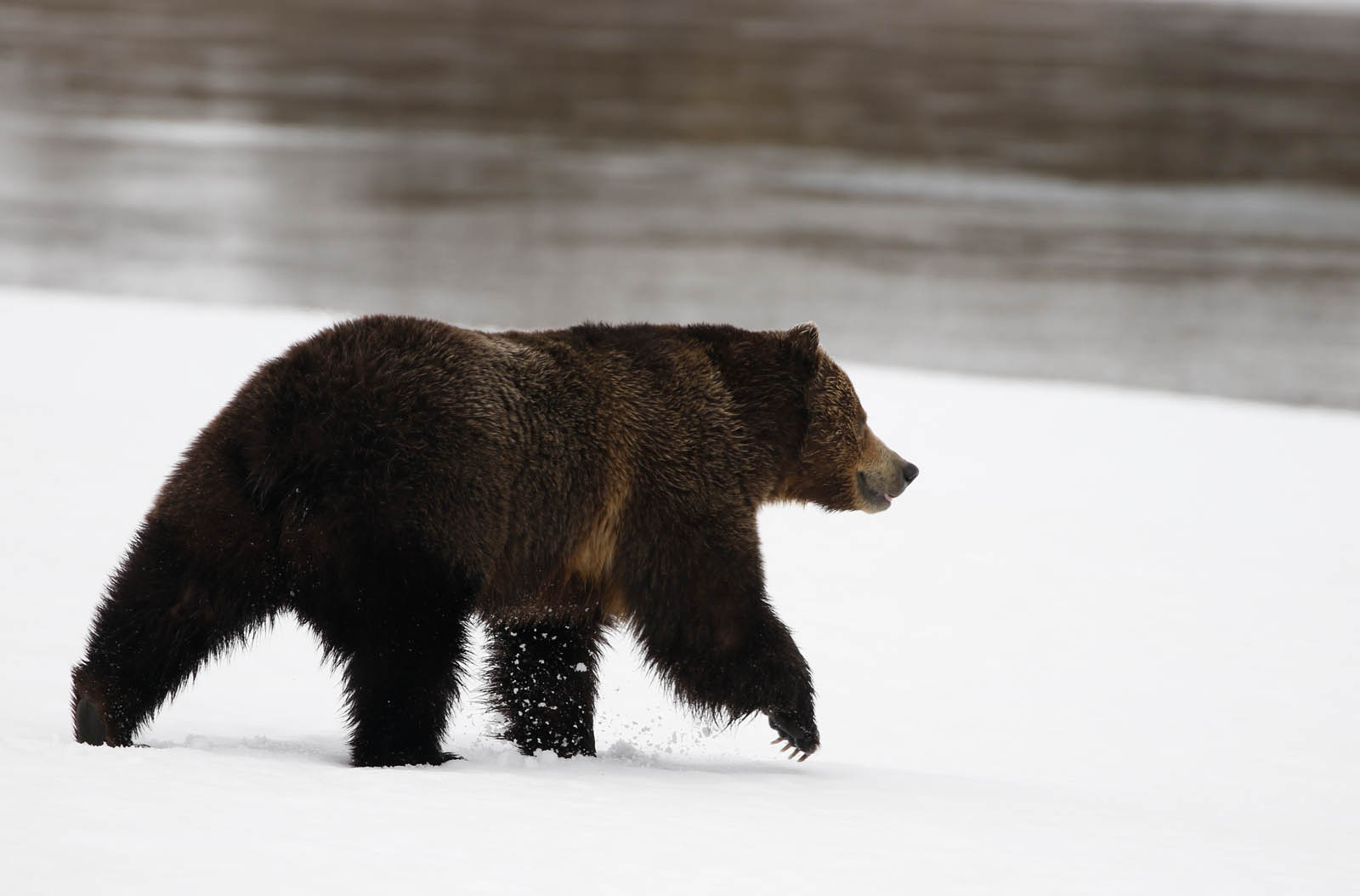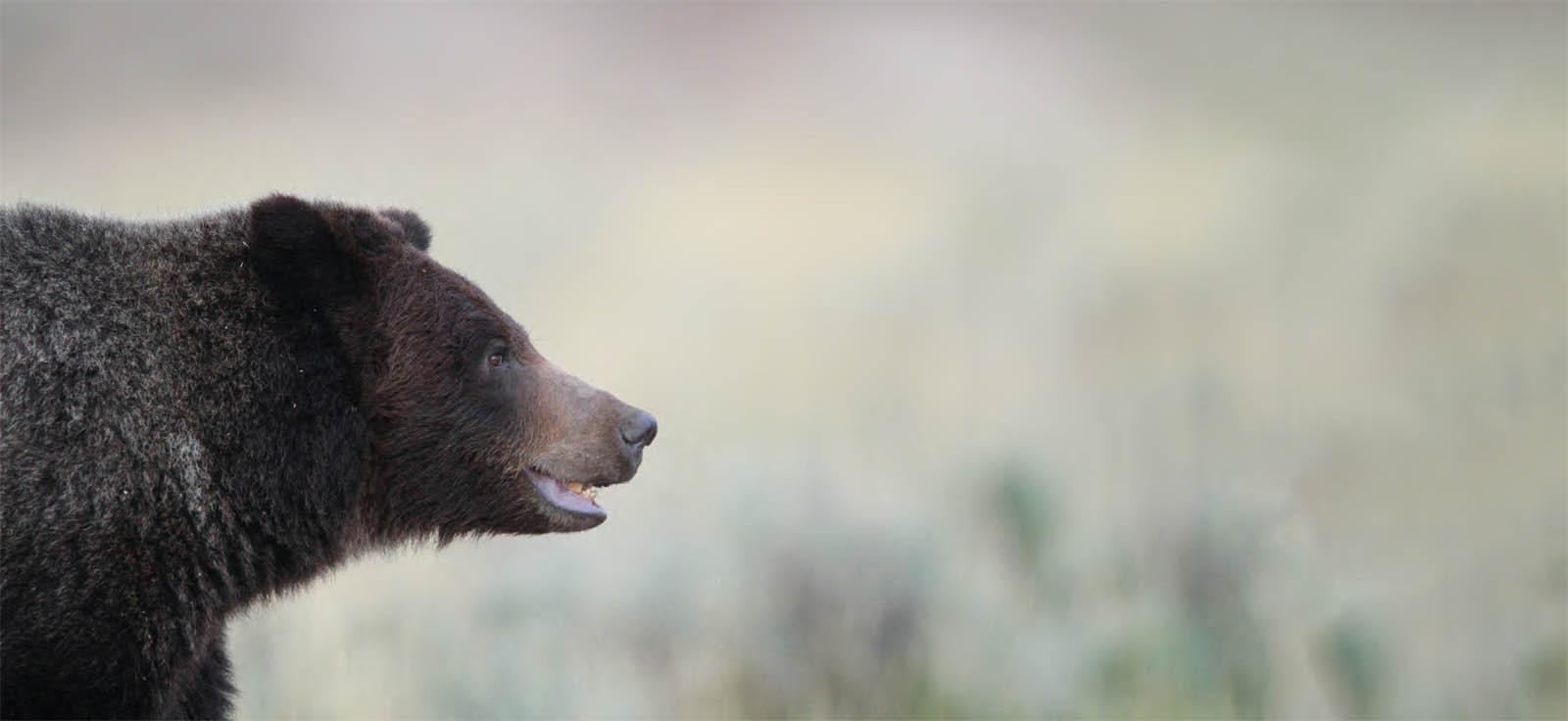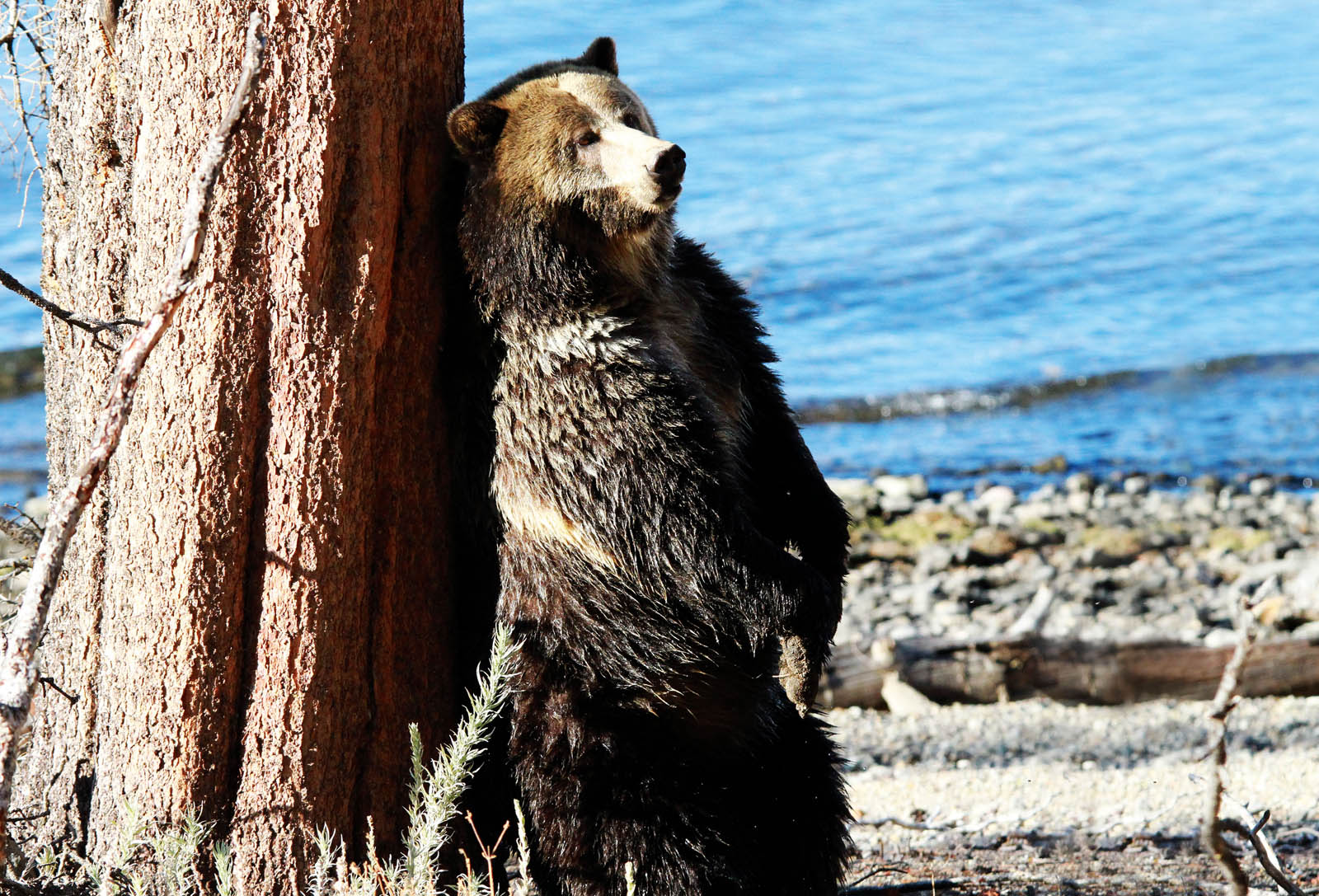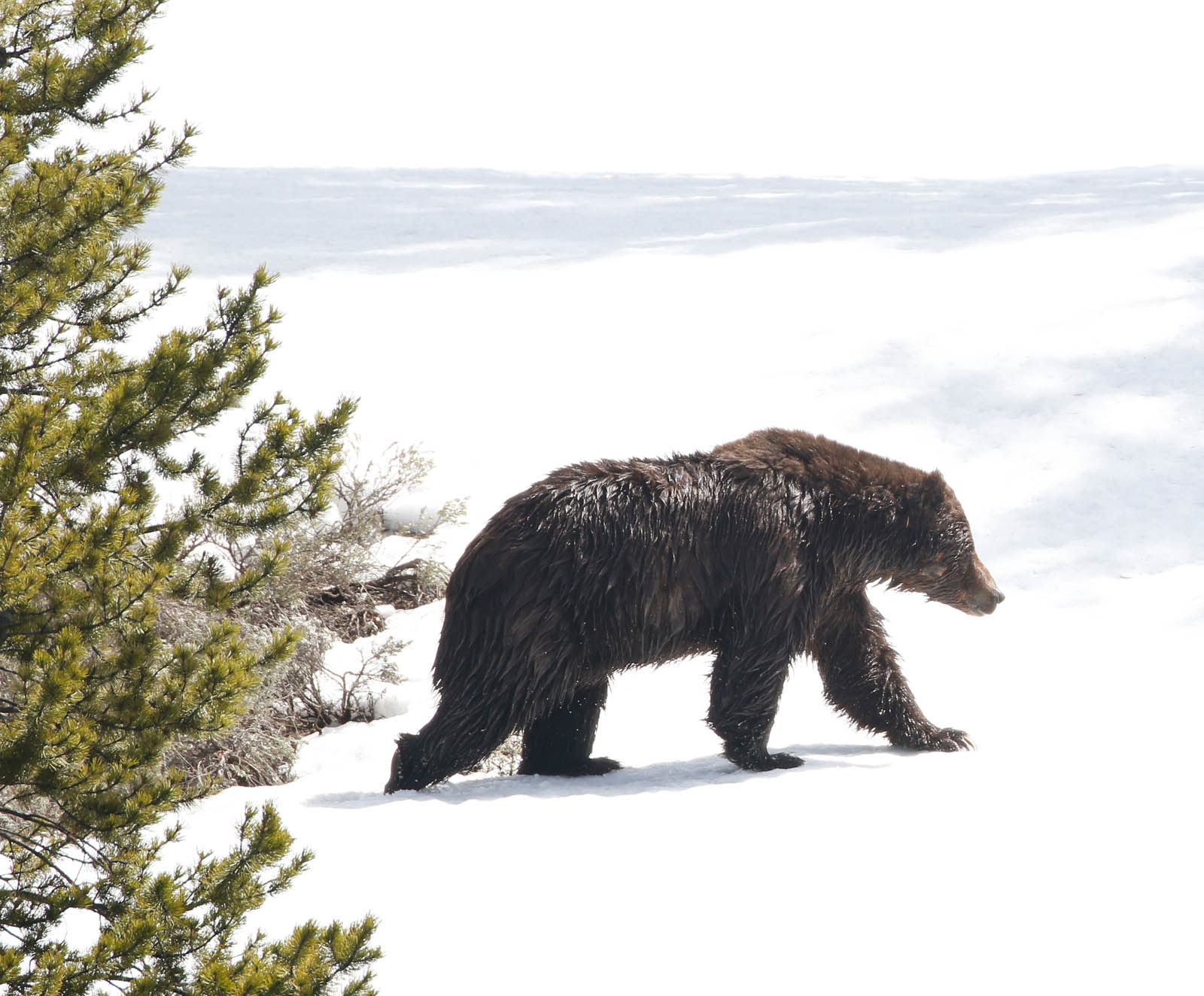For the love of the grizzly.
This book is dedicated toRaspberry.
Bears are not companions of men, but children of God, and Hischarity is broad enough for both.
Foreword
Vhpahtse-nhkohe, or white-mouthed bear, is what my Native Americanfriend calls them, not grizzly bears. The fact his people named this bear for thesaliva produced around its mouth when agitated, and not for the silvery, grizzledtips of its outer guard hairs as seen from a distance, speaks to their intimateinteractions with the great bear. The Cheyenne, Crow, Lakota, Blackfeet, and FirstNations peoples around the world have not only coexisted in reverence with thegrizzly bear, but sought them out as wise grandfathers and keepers of a very sacred,healing medicinesome of the most powerful among shamans.
So when I went to work on a grizzly bear film with fellow advocate andfriend, Doug Peacock, one of the first people we reached out to was our Nativefriend who works with tribes across North America. I asked him if there was anyopportunity to film, and/or sit in on a grizzly bear ceremony, somewhere within adays drive of my home in Montana.
He told me that once the grizzly bear was harassed, murdered, andeventually driven to the most remote and desolate regions of the American West, notunlike indigenous cultures, the sacred relationship between the two was disrupted.That when the grizzly bear began to disappear off of the physical landscape, andholy men with grizzly bear medicine moved on to the next world, there was no one topass the eons old knowledge to. He told me that sadly, once the grizzly wasexterminated, the medicine and ceremonies usually went with it. There was a greatheaviness between us.
We have more at stake than just the survival of an animal species. Ibelieve that whatever happens to the grizzly bear will eventually befall humans. Thetwo are that connected. For when we lose the ability to appreciate the intricaciesof coexistence, and compassion for another five-toed sentient being trying to findits way in this world too, we lose that luminous fiber that connects us all, andbecome slightly less human.
I used to tell people that grizzly bears saved my life after immeasurabletragedy, so I felt an obligation to protect them. My friend, and poet, CMarieFuhrman summed it up a little better. She offered that grizzly bears didnt save mylife, I saved my life, grizzly bears just showed me why. I like that better.
The following stories are told from a place of love and respect for twospecies I hold dear: humans and grizzlies. Enjoy every word.
For the grizzly inside us all,
Brad Orsted
Wildlife Photographer
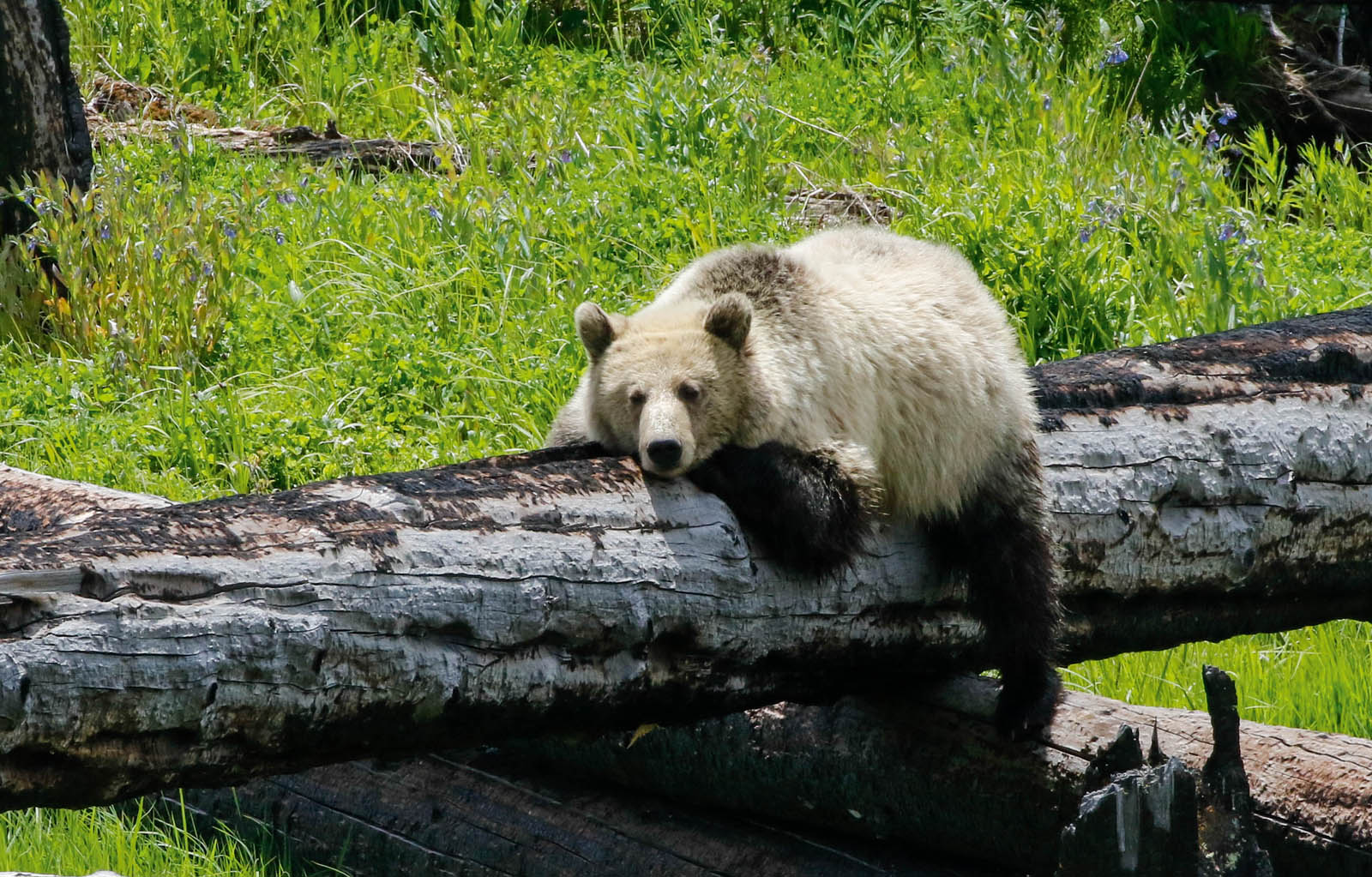
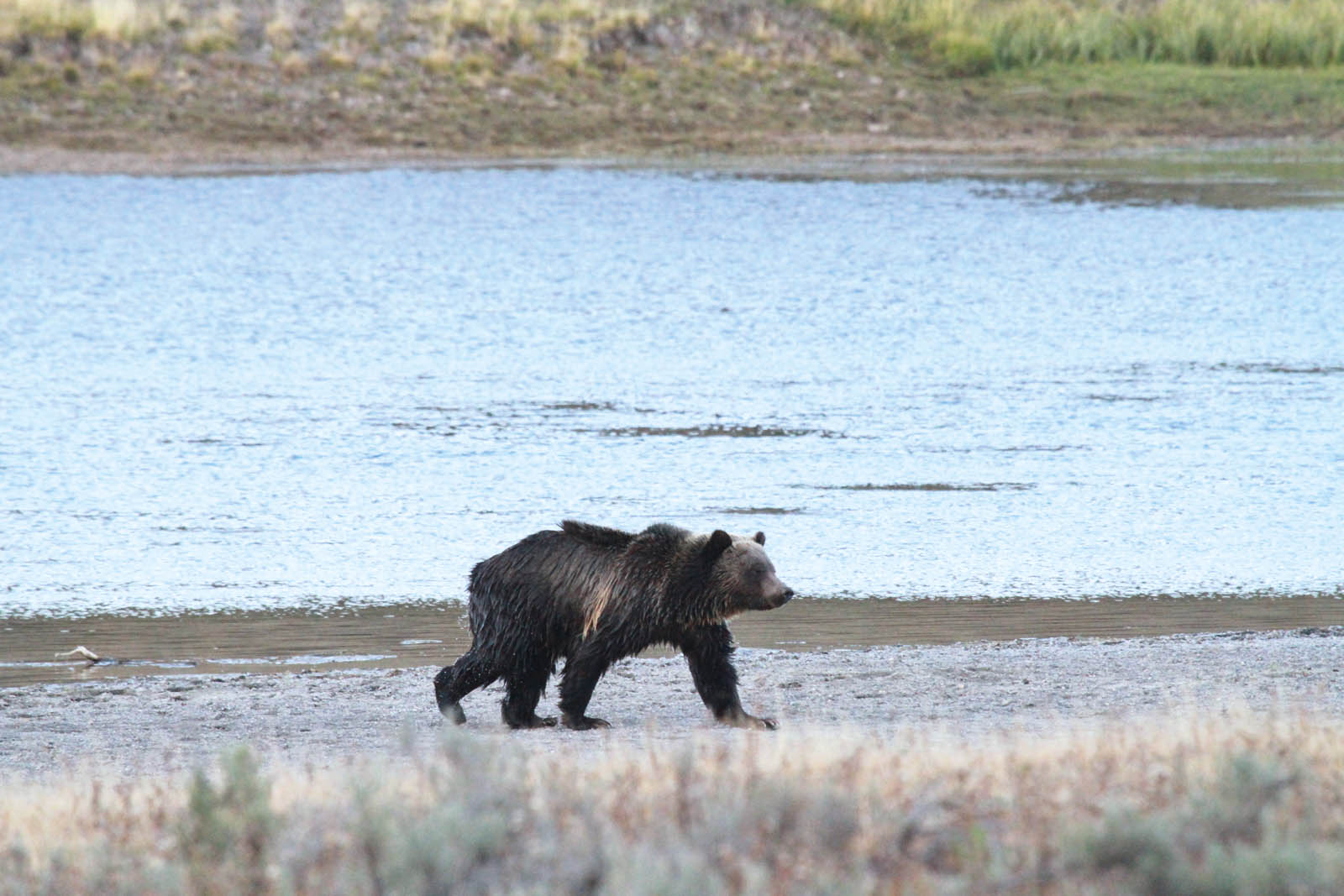
Introduction
As the snow starts to melt andspringtime arrives in the Rockies, many people like me find themselvesdreaming not only about the beauty of the wild places you can visit, but also aboutthe wild animals who inhabit those places. Its at this time when I start thinkingabout the mighty grizzly, and wondering what kind of year I am going to have whenIm out with my camera and shooting photos.
As a young girl, I remember traveling to Yellowstone with my family inhopes of seeing one of these magical bears. Back then we considered ourselves luckyif in a time frame of ten days we were able to see just one, and when we did finallycome across one, it was the highlight of our trip. We would then spend as much timeas we could watching it. It didnt matter if the bear was hundreds of yards away andlooked like an ant on the horizon, we were always in awe and stayed until itdisappeared out of sight.
As the years went by, my love for this incredible species grew and Ifound myself drawn in their direction more than ever. I started visiting Yellowstonemore often, hoping to catch a glance and watch them in their natural habitat. Iwanted to see sows and cubs as they interacted, and to watch as the big boars madetheir presence known. I wanted to know what it meant to be a grizzly living in thewild.
The memories I have made over the years are priceless. I remember whenthe Fishing Bridge campground was located across from the Fishing Bridge storerather than where it is now. It always seemed like a very eerie place to stay.Whether it was daytime or nighttime, I remember thinking that every noise was a bearcoming to carry me away. Eventually that campground was closed and the new one wasbuilt. That area was given back to the grizzlies because it was considered theirpassage as they traveled to and from Yellowstone Lake.
At one point in time, there was a grizzly that learned how to get intothe bear-proof garbage cans. It would use one paw and stick its claws underneath thehandle and open it up and then use the other paw to reach down in and get thegarbage out. Im not sure whatever happened to that bear. I remember themsetting a trap for it, but never heard the outcome.
I also remember a small ranger station or warming hut that was locatedright by the entrance of that first Fishing Bridge campground. We would often stopin there and ask if there were any recent bear sightings. If there were, we hopedthat we could make it to the destination before the bear disappeared into thelandscape.
Speaking of landscapes, Yellowstone is such a beautiful place for agrizzly to wander. The amazing sunrises and sunsets, not to mention the mountainsand valleys, the rivers, the wildflowers, the pines, and all of the smells that goalong with themwhat an incredible place to call home.
Ive watched grizzlies swim and fish in the lake, take down anotheranimal for food, fight another bear, chase wolves, play on a patch of snow, andsleep on a log. Ive watched sows and boars mate, cubs hug their mom, and many otherwonderful sights. There is no better way to learn about this type of nature than toexperience it firsthand. Thankfully I have been able to observe many of the things Ialways dreamed about.
I hope you enjoy this book as much as I have enjoyed spending so muchtime in the wilderness.


